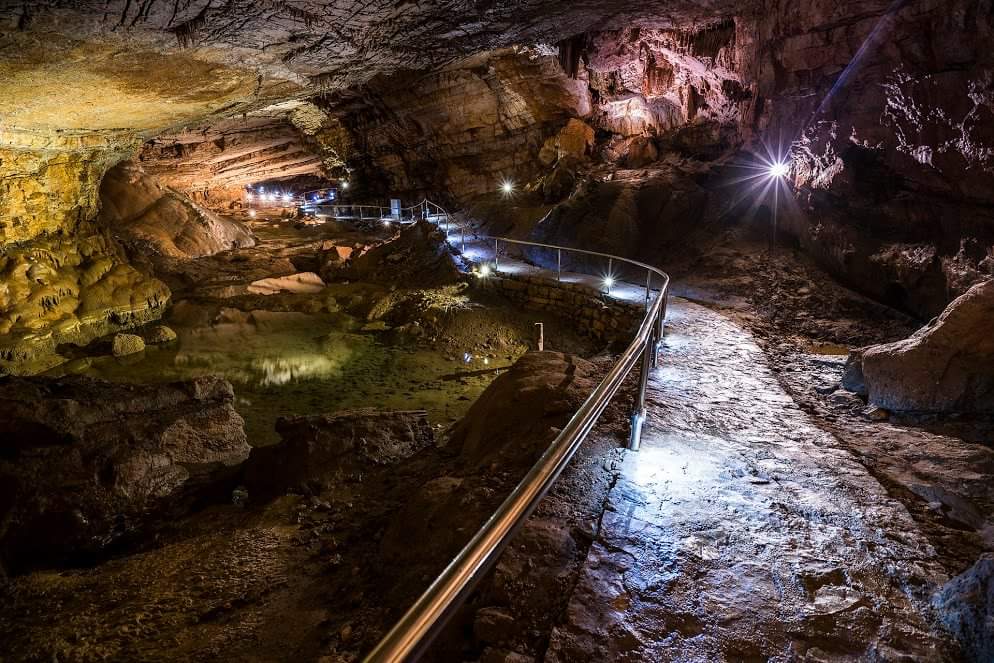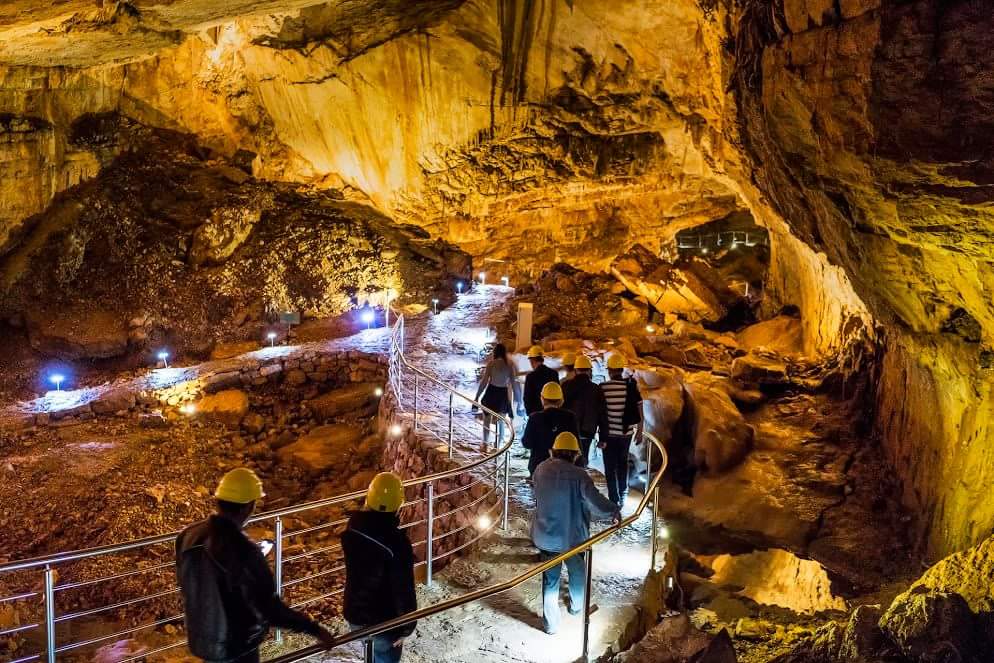First information on speleological structures in B&H are as old as the Ottoman Empire. A Turkish travel writer, Evlija Celebi, was the first person known who, while travelled around the country, devoted some of his time to explore and describe the caves and their environment. Indeed, there are caves in Bosnia and Herzegovina that are truly breath-taking. As if their pictures are telling you the ancient fairy tales. But, there is more to it than just stories and tales. In fact, these caves are part of a rich natural legacy of our homeland. Some of these caves are yet unexplored, while others are indispensable tourist attractions. Take a moment to step inside the Vjetrenica, and listen to its story.
Decorated with spacious corridors, halls, waterfalls, number of streams, small recurrent flows and underground lakes, undoubtedly, Vjetrenica is the most beautiful cave in Bosnia and Herzegovina. The cave was mentioned for the first time by Pliny the Elder in the middle of the 1st century AD, who wrote about it in his book called Natural History, written in 77 AD. As the old book explained, Vjetrenica is located in the southern part of the country, in the area belonging to municipality of Ravno. The cave entrance is in the very edge of Popovo polje, 300 meters east of the Zavala Village centre, and 260 meters above sea level. The cave is 80 kilometres far from the city of Mostar, and 12 kilometres air distance away from the Adriatic Sea.

A Protected Monument of Nature
Vjetrenica is the most interesting cave in the world by its biodiversity. It is a home to nearly 200 different animal species: 37 of these species were first found and described right inside this cave. Even before the year 1940, the cave was arranged to be a tourist site. In 1952, it became a protected natural monument, and in 1965 it was categorized as a special geological reserve. Moreover, in 2004 Vjetrenica was nominated for the preliminary list of world heritage by UNESCO.
The most systematic research of Vjetrenica was conducted in the period from 1912 to 1914. The research was carried out by a Czech scientist named Karel Absolon. He discovered nearly all the channels of the cave that are known today. The main channel is over 7,000 meters long. During summer, the wind power amounts to 15 m/s, and the average temperature approximates to 11 degrees Celsius. The cave channels are mainly turned to South or Southeast, and towards the sea.
Environmental Conditions in Vjetrenica
A strong wind at the entrance of the cave is a fascinating feature of Vjetrenica. Strictly speaking, it is not the wind, but a specific physical phenomenon. More precisely, the air flow occurs in order to counterbalance the constant, internal temperature inside the cave, with the changeable temperature of the air outside. The topographic surface above the Vjetrenica is covered by deep cracks. In the summer, warm air enters the cave through these cracks, it cools down and goes out through the main cave entrance. During the winter, when the external temperature drops to a level that is significantly lower than the internal temperature, the wind reverses its direction. In transitional periods, the wind may change its direction several times a day; for example, if the external temperature gets lower in the morning, and increases later in the day.
A Ballroom for Fairies
The Big Lake is the largest water surface in Vjetrenica. The main channel still retains the remains of old boats that belonged to explorers who wanted to cross over the lake.
The Golden Hall, as the name itself suggests, is one of its most beautiful halls and the true symbol of Vjetrenica. Apart from the Golden Hall, another interesting place draws visitors’ attention: Fairy’s Courtyard (Vilino guvno). In fact, as described in some ancient texts, historical mythical stories of Vjetrenica are connected to this location. As written by Jakov Sorkocevic in 1582, “the local people claim that nymphs, the beings commonly known by locals as fairies, have settled in this cave, and they play music and dance when the night falls… ”

Visitors will certainly be interested to see the beautiful stalagmites on the wedges. Their appearance sometimes reminds the visitors of Muslim tombstones. This is why, once when he visited the cave with his army, the bey Rizvanbegovic compared them to a Turkish cemetery.
The tourist part of the trail ends with a Bandit table (Hajdučki stol), a man-made stone table, surrounded by several stone seats.
Cave Rules
Ticket prices
Group prices (min. 20 persons)
Adults 10,00 KM
Pensioners 8,00 KM
Students 8,00 KM
Children (4-15 yrs) 5,00 KM
Children (under 4 yrs) Gratis
Guide services
For a group of min. 30 persons 50,00 KM
Individual prices
Adults 15,00 KM
Pensioners 10,00 KM
Students 10,00 KM
Children (4-15 yrs) 8,00 KM
Children (under 4 yrs) Gratis